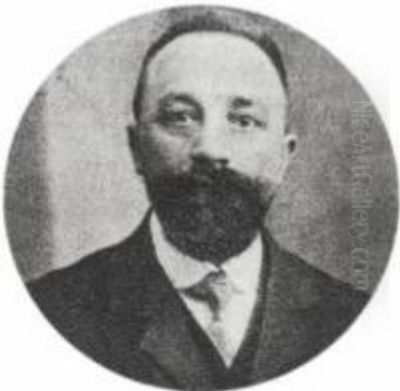
František Dvořák, a name that resonates with Czech artistic heritage, stands as a significant figure in the landscape of late 19th and early 20th-century European art. Born in 1862 and passing in 1927, his life and career spanned a period of immense artistic transformation, from the waning days of academic classicism to the vibrant explosion of modern art movements. As a painter, Dvořák carved a unique path, blending meticulous traditional techniques with an evolving sensibility that touched upon Symbolism, Art Nouveau, and a distinct spiritual introspection. This exploration delves into the life, work, artistic connections, and enduring legacy of this often-undersung Czech artist, distinguishing him clearly from his famous musical namesake, Antonín Dvořák, and other individuals who shared his name.
Early Life and Artistic Awakening in Bohemia
František Dvořák was born in Přelouč, a town in Bohemia, then part of the Austro-Hungarian Empire. His early artistic inclinations likely found nourishment in the rich cultural milieu of Bohemia, a region with a deep history of artistic and craft traditions. While specific details of his earliest training are not always exhaustively documented in widely accessible sources, it is known that he pursued formal art education, a common path for aspiring artists of his time. This would have involved rigorous training in drawing, anatomy, and the classical principles of composition, likely at an institution such as the Academy of Fine Arts in Prague.
During these formative years, Dvořák would have been exposed to the prevailing artistic currents in Prague. The late 19th century saw a burgeoning Czech national cultural revival. Artists like Mikoláš Aleš, with his historical and folk-themed works, and Josef Mánes before him, had laid a foundation for a distinctly Czech artistic identity. While Dvořák's later international experiences would broaden his horizons, this initial grounding in his homeland's artistic environment undoubtedly shaped his early development. His technical proficiency, a hallmark of his later work, was certainly honed during these foundational years of academic study.
The Parisian Crucible: New Influences and Artistic Friendships
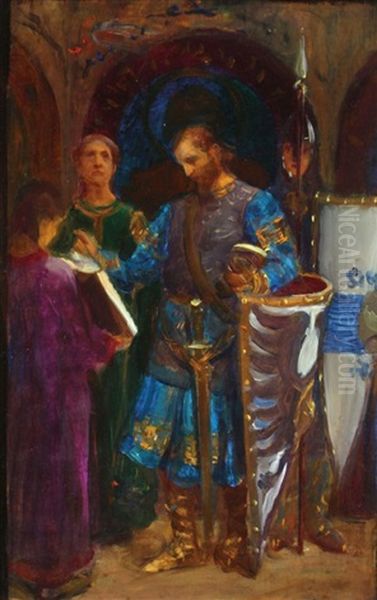
A pivotal moment in František Dvořák's career, and indeed for many artists of his generation, was his immersion in the artistic melting pot of Paris. Around 1887 or 1888, he journeyed to the French capital, a city then universally acknowledged as the epicenter of the art world. This was not a solitary venture; he traveled with fellow Czech artists Karel Vítězslav Mašek and, most notably, Alfons Mucha, who would go on to become a global icon of the Art Nouveau style.
In Paris, Dvořák and his compatriots sought to refine their skills and absorb the latest artistic innovations. They enrolled in prestigious private art academies, such as the Académie Julian and the Académie Colarossi. These institutions offered alternatives to the more rigid state-run École des Beaux-Arts and were popular with international students. Here, they would have received instruction from prominent Salon painters, perhaps figures like Jean-Léon Gérôme or William-Adolphe Bouguereau, who, despite the rise of Impressionism, still held considerable sway. The emphasis remained on mastering figurative art, though the atmosphere was often more liberal than the official Salon.
The Paris of the late 1880s and 1890s was a whirlwind of artistic activity. Impressionism, pioneered by artists like Claude Monet and Pierre-Auguste Renoir, had already challenged academic conventions. Post-Impressionism was taking diverse forms through artists such as Paul Cézanne, Vincent van Gogh, and Paul Gauguin. Symbolism, with its emphasis on dreams, mysticism, and the inner world, was gaining traction, championed by figures like Odilon Redon and Gustave Moreau. And the sinuous lines of Art Nouveau were beginning to unfurl, an aesthetic that Mucha would so masterfully embrace. Dvořák, amidst this ferment, absorbed these influences while retaining a strong connection to classical techniques.
Artistic Style: A Synthesis of Skill and Spirit
František Dvořák's artistic style is characterized by a remarkable synthesis of technical mastery and a profound, often spiritual, sensibility. His brushwork was typically fine and meticulous, allowing for a high degree of realism and detail, particularly in his portraits and figurative works. He possessed a sophisticated understanding of color, employing rich and nuanced palettes to create mood and define form. His handling of light and shadow was adept, often used to enhance the three-dimensionality of his subjects and to create a subtle dramatic effect, drawing the viewer's eye and highlighting emotional states.
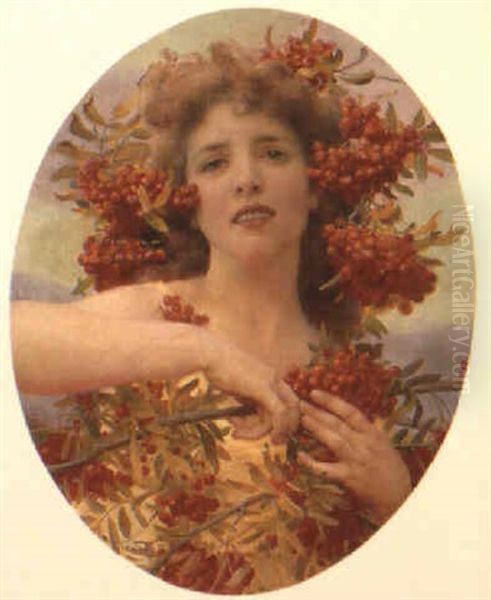
While influenced by the decorative elegance of Art Nouveau, particularly given his association with Mucha, Dvořák's work generally leaned towards a more traditional, classical aesthetic compared to the overtly stylized output of some of his contemporaries. However, he was far from a mere academician. A significant aspect of his later work was an engagement with what has been termed "New Spiritualism." This involved an attempt to capture not just the external likeness of his sitters but also their inner spiritual essence or psychological depth.
This spiritual dimension is evident in his portraits of figures associated with Eastern philosophies or spiritual movements, such as his depictions of Ramakrishna, the 19th-century Indian mystic, and Sarada Devi. These works suggest an artist seeking to transcend mere representation, aiming to convey a deeper, more universal human experience. This introspective quality, combined with his refined technique, lent his art a unique character, setting it apart from both purely academic painting and the more radical avant-garde movements. His ability to convey emotion through subtle expressions and carefully composed environments was a key strength.
Representative Works and Thematic Focus
One of František Dvořák's most frequently cited representative works is the oil on panel painting titled Woman Sitting by a Window. While the exact dating spans a broad period (often cited as 1862-1927, which encompasses his entire lifespan and is likely a general cataloging rather than a precise creation date for this specific piece), it exemplifies many of the qualities associated with his art. Such a scene typically allows for an intimate portrayal, a play of interior and exterior light, and a moment of quiet contemplation, all themes Dvořák handled with sensitivity. The dimensions, often noted as around 15.2 cm x 22.9 cm, suggest a work of intimate scale, perhaps a cabinet painting intended for close viewing.
Beyond this specific example, Dvořák's oeuvre consisted significantly of portraiture. He was highly regarded for his ability to capture not only a physical likeness but also the personality and inner life of his subjects. These portraits ranged from formal commissions to more personal studies. His engagement with "New Spiritualism" meant that some of his portraits aimed to convey a sense of serenity, wisdom, or profound contemplation, moving beyond the purely social or documentary function of much 19th-century portraiture.
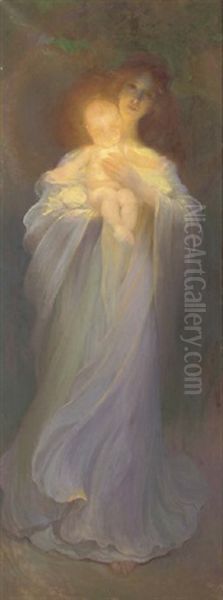
Genre scenes, depicting everyday life or allegorical themes, also featured in his output. In these, his meticulous technique and ability to create atmospheric settings would have been prominent. The influence of Symbolism might be discerned in works that hint at deeper meanings or explore universal themes of human existence, love, loss, or spirituality. His art consistently reflected a deep engagement with the human condition, explored through a lens of refined craftsmanship and thoughtful introspection.
International Career and Recognition
František Dvořák's artistic ambitions and career were not confined to Bohemia or even Paris. He embarked on an international career that saw him work and exhibit in various countries, significantly including Italy and the United States of America. Italy, with its unparalleled artistic heritage, was a traditional destination for artists seeking to study the Old Masters and absorb the classical tradition firsthand. His time there would have further enriched his understanding of form, composition, and technique.
His ventures in the United States marked a significant phase of his career. The late 19th and early 20th centuries saw a growing American appetite for European art and artists. Dvořák, with his sophisticated portraiture skills, likely found patronage among the burgeoning American elite. This international exposure was crucial for an artist from a smaller European nation, allowing him to reach a wider audience and establish a broader reputation.
Dvořák's work was also showcased in prominent international exhibitions. He is recorded as having exhibited at the prestigious Paris Salon, the official art exhibition of the Académie des Beaux-Arts, which, despite challenges from independent shows, remained a significant venue for artists seeking recognition. Furthermore, his paintings were displayed at the Royal Academy of Arts in London, another key institution in the European art world. Participation in such exhibitions was a testament to the quality of his work and his standing among his peers. This international activity helped to disseminate his art and, by extension, contributed to the visibility of Czech art on a global stage.
Contemporaries and Artistic Milieu
František Dvořák operated within a rich and diverse artistic milieu, interacting with and responding to a wide array of contemporary artists and movements. His closest Czech artistic companions, particularly in his Parisian years, were Alfons Mucha and Karel Vítězslav Mašek. Mucha, of course, became a leading figure of Art Nouveau, and their shared experiences in Paris, despite their stylistic divergences, undoubtedly fostered mutual artistic dialogue. Mašek, also a talented painter, explored Symbolist and Art Nouveau tendencies.
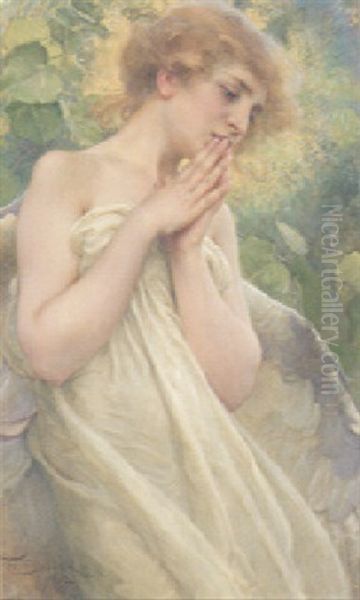
In the broader Parisian context, Dvořák would have been acutely aware of the dominant artistic figures and trends. The legacy of Impressionists like Claude Monet, Edgar Degas, and Camille Pissarro was undeniable, even if Dvořák's own style did not directly emulate theirs. The Post-Impressionists, such as Paul Gauguin, with his Tahitian scenes and Symbolist leanings, and Vincent van Gogh, with his expressive use of color and brushwork, were pushing art in radical new directions. The Symbolist movement, with artists like Gustave Moreau, Odilon Redon, and Pierre Puvis de Chavannes, explored themes of mythology, dreams, and spirituality, which may have resonated with Dvořák's own introspective tendencies.
Within Central Europe, figures like Gustav Klimt in Vienna were developing a unique form of Symbolism and Art Nouveau (Secession style), characterized by opulent decoration and psychological depth. While Dvořák's style was generally more restrained, the intellectual currents of Symbolism and the search for deeper meaning in art were widespread. Other notable Czech contemporaries included Luděk Marold, known for his panoramic paintings and illustrations, and later, Max Švabinský, a master draftsman and printmaker. Even the older generation, such as Vojtěch Hynais, who contributed to the decoration of the National Theatre in Prague, formed part of the artistic landscape Dvořák navigated. His ability to maintain a distinct artistic voice amidst such a plethora of styles and personalities speaks to his conviction and skill.
Legacy and Art Historical Evaluation
František Dvořák's position in art history is that of a skilled and thoughtful painter who successfully navigated the complex artistic currents of his time. He is often lauded for his technical prowess, particularly in portraiture, and for his ability to imbue his subjects with a sense of psychological depth and spiritual presence. His work is seen as a bridge between 19th-century academic traditions and the emerging modern sensibilities of the early 20th century. He absorbed contemporary influences, such as elements of Art Nouveau and Symbolism, without abandoning his commitment to representational accuracy and classical composition.
His role as a "kindler of the Czech nation's cultural fire," as some commentators have described him, highlights his contribution to raising the profile of Czech art internationally. Through his travels, exhibitions, and the dissemination of his work, he helped to demonstrate the vitality and sophistication of artistic production in Bohemia.
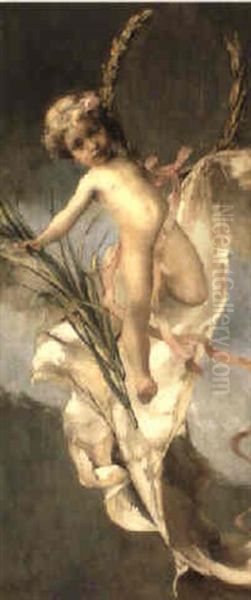
However, his work was not without its complexities or, at times, a reception that reflected the evolving tastes of his era. There are indications that some of his more spiritually inclined or subtly abstracting works were considered challenging or difficult to interpret by certain segments of the Czech intellectual sphere at the time. This suggests an artist who was, in some respects, pushing beyond conventional expectations, even if he did not embrace the radical formal innovations of the avant-garde.
Today, František Dvořák is appreciated for his refined aesthetic, his sensitive portrayals of the human spirit, and his contribution to the rich tapestry of Czech art. His paintings, such as Woman Sitting by a Window, continue to be admired for their quiet beauty and technical excellence. He represents a strand of European painting that valued both craftsmanship and meaningful content, seeking to create art that was both visually compelling and emotionally resonant.
Conclusion: An Enduring Artistic Voice
František Dvořák (1862-1927) remains an important figure in Czech art history, a painter whose career successfully bridged the academic traditions of the 19th century and the burgeoning modernism of the early 20th. His journey from the art academies of Prague to the vibrant studios of Paris, and onward to an international career that included Italy and the United States, reflects a life dedicated to artistic pursuit and excellence.
His association with prominent contemporaries like Alfons Mucha and Karel Vítězslav Mašek, and his exposure to the myriad artistic movements flourishing in Paris, enriched his artistic vocabulary. Yet, Dvořák maintained a distinctive voice, characterized by meticulous technique, rich coloration, a sensitive handling of light, and a profound interest in the human psyche and spirit. His exploration of "New Spiritualism" in his portraiture set him apart, as he sought to convey an inner essence rather than mere external appearance.
While perhaps not as globally recognized as some of his more revolutionary contemporaries, František Dvořák's contribution is significant. He excelled in creating art that was both aesthetically pleasing and emotionally engaging, earning him respect both at home and abroad through exhibitions in major European art centers. His legacy is that of a dedicated craftsman and a thoughtful artist who contributed to the international reputation of Czech art, leaving behind a body of work that continues to be valued for its skill, sensitivity, and quiet depth.